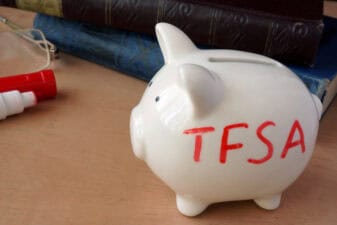Canadians generally look forward to the end of winter, but even when the snow has melted and sunny days are beckoning, there’s a black cloud on the horizon.
Yes, tax-filing time. The deadline is April 30, 2015, which falls this year on a Thursday. (At least we have two more weeks than the Americans to procrastinate: their deadline is famously April 15.)
If you owe Canada Revenue Agency (CRA) any money at all, this is a deadline you definitely don’t want to miss. The late-filing penalties and interest charges are onerous and – ironically – not tax-deductible! And if it owes you, the sooner you get a refund, the better.
Once RRSP season ends on March 2, it’s time to get serious about tax preparation — but you can start warming up now. Below, we’ve broken the ordeal down into seven sequential steps. And remember the old saying about how to eat an elephant: one bite at a time!
1. T-4s. If you were employed in 2014, make sure your employer has issued you a T-4 slip. This should have been automatically mailed to your home address; if it hasn’t, check with your HR department
2. How will you prep? Decide whether you’re going to use an accountant or local tax preparation service or do it yourself. If the latter, choose your tax preparation software, purchase or download the package, and check for subsequent updates.
Personally, I prefer cloud-based packages like Intuit Canada’s TurboTax (the most popular tax software in Canada). By using the same package year after year, all the information from previous years is there on the cloud, ready to be imported (where necessary), saving you from inputting basic information and also reminding you of past RRSP contributions, capital gains status, and similar information.
3. Organize. Gather all your receipts and organize them. Put them into two envelopes or boxes: taxable income and receipts/deductible. If you have lots of non-registered investments, you may need to wait until late March or even early April for the last few to dribble into your mailbox. While waiting, go through your brokerage statements and make a list of all the major slips you’re waiting for. Tick them off as they arrive.
4. Doing it yourself? If you chose the first two routes in Step 2, you can hand it off to your chosen tax preparation professional, but you could also make some rough calculations by reading what do-it-yourselfers will be doing next.
5. Bad news first. For those doing it themselves, I like to start with the bad news first. Enter all the information from your T-4 slip, and get a first estimate of your taxable income. Then tackle any other source of income you may have generated outside of employment. For most of us, this will be taxable investments or rental income.
From late January to early April, financial institutions are required to send you slips reminding you (note: assume the CRA is also getting this information) of all interest, dividends, and capital gains you received in 2014. Don’t worry about investments held inside RRSPs or TFSAs.
6. And now, the good news. Now go to the second pile of receipts that may help you lower the taxable income estimated above. In most cases, RRSP contributions made before the RRSP deadline will be the most use in cutting down your taxable income. That’s why everyone made such a big deal about RRSPs back in February!
Also enter any deductible receipts you received up until December 31, 2014 for the year: charitable or political contributions and a host of other possible deductions. If you need help identifying these, check the “interview” mode of the tax software or obtain the latest copy of the annual tax guides: anything by Evelyn Jacks of The Knowledge Bureau should help here.
Remember, you can keep inputting information as slips arrive as the weeks go by: just don’t file until you’re sure everything that may raise or lower your tax liability has arrived. It’s bad enough going through this once a year — you don’t want to be so early that you need to file a later notice of adjustment.
7. D-day has almost arrived! If you’re going the do-it-yourself electronic route, you may as well NetFile your return. This should speed any tax refund and save you the expense of printing and mailing your returns.
If you’ve never done this before, go to the CRA’s NetFile site for instructions. It used to be that you needed a four-digit code the CRA mailed out, but this has been replaced. All you now need is your Social Insurance number. NetFile is operational as of February 9, 2015; you’ll just want to make sure your tax software is certified for NetFile use. The site includes a list of most of the major such products, many of them free of charge.
Aim to NetFile before midnight on April 30 and enjoy the satisfaction of hitting the “send” button and getting an immediate acknowledgement from the CRA that your return has been received.
Then you can do a bit of gardening and really enjoy spring!








